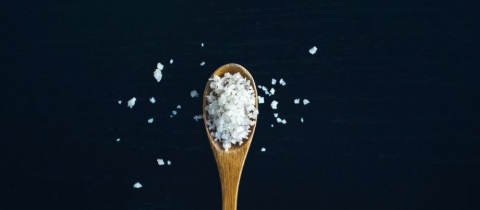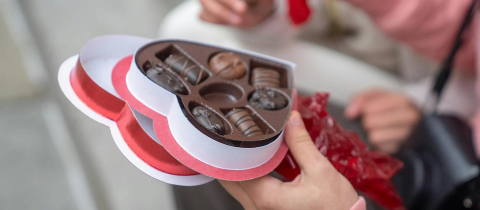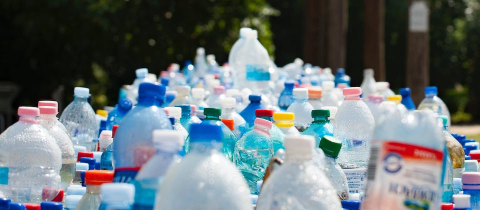British chef Jamie Oliver opened up quite a can of worms with his plan to improve the food served in Los Angeles schools. Actually, worms would probably be an improvement over some of the fatty processed food served, but after initially agreeing to the filming of Jamie’s popular Food Revolution program inside its schools, the Los Angeles school board decided that while the chef’s ideas for improved nutrition would be welcome, his cameras would not be. Apparently they had heard that a similar venture by Mr. Oliver in Huntington, West Virginia, left a bad taste is some administrators’ mouths.
Let me state for the record that I like Jamie Oliver. I value his attempts to improve students’ health through his “Food Revolution.” But I’m revolted by his “science,” or I should say, his lack of it. No big surprise here I guess, given Jamie left school at the age of sixteen to pursue his culinary interests at Westminster Catering College where I suspect chemistry was not highlight of the curriculum.
Unlike many self-proclaimed nutritional gurus, Jamie is not an extremist. While he favours organic ingredients when possible, he doesn’t espouse a vegan diet and is not averse to a hamburger. He just wants that hamburger to be made of proper ground beef, not various meat by-products. And if kids are to have an ice cream sundae, he’d rather “it didn’t contain shellac, hair or beaver glands.” It is with statements like this that Jamie muddies the waters.
While the Los Angeles school board was reticent about allowing him to exercise his culinary talents in the kitchen, one school agreed to let Jamie “teach” a science class about food. And these kids were sorely in need of some education along these lines considering that some thought honey comes from bears and chocolate is pumped from a chocolate lake. Jamie’s science class, though, came down to frightening students away from processed foods with a dramatic but nonsensical demo.
“Do you know what is in your ice-cream sundae?” Jamie asked the class as he prepared to reveal the “truth.” Out came a blender and in went a mix of live lac bugs, human hair and feathers. Surely beaver glands would have been thrown in had they been available. Instead Jamie had to make do with a stuffed beaver forlornly looking on, as if deprived of his anal glands by nasty food chemists looking to improve the flavour of ice cream. What a blend of nonsense.
Let’s start with the shellac, a secretion of the lac bug that in a purified form can indeed be applied as a coating on the candy topping that decorates sundaes. But implying that chopped live insects are an ingredient in sundaes is ridiculous. As ridiculous as the theatrics with hair and feathers. Here, the reference is to cookie dough that may be found in some ice creams and is often formulated with L-cysteine, an amino acid that improves texture. This compound can be readily isolated from the mix of amino acids produced by chemically breaking down proteins. Indeed, both hair and feathers are composed of proteins and can serve as the raw materials for the production of L-cysteine. These days cysteine is actually made by a fermentation process, but its origin is really irrelevant. What matters is what the final product is. And L-cysteine is a harmless, approved food additive. Any suggestion that duck feathers are added to ice cream is quackery.
On to the beaver glands. Jamie debuted this piece of puffery on The Late Show. Host David Letterman has been sworn at by Cher, instructed on the use of cucumbers in the bedroom by Dr. Ruth Westheimer and endured exposure to a variety of excreta from his animal guests. But rarely has he expressed the kind of shock we saw when chef Oliver blurted out that cheap strawberry syrup and vanilla ice cream can contain beaver anal glands.
Audience reaction mirrored Letterman’s, and the episode triggered predictable exchanges on the web expressing outrage about “what they’re putting into our food.” Some people wondered about just how many beavers sacrificed their lives to produce that pint of ice cream in the fridge.
The answer to that is, none. But it is true that when beavers are trapped for their pelt, admittedly not a pleasant thought, two small glands near their anus that produce a territorial marker called castoreum are removed, and their contents extracted with alcohol for commercial use. A few parts per million of purified castoreum may be one of the ingredients included under “natural flavour” on a jam or ice cream label. But that’s a long way from mixing beaver glands into ice cream.
So we have an interesting philosophical question here. Does the end justify the means? Is it acceptable to improve people’s diet by evoking the yuck factor through false information? Jamie Oliver strives to feed people a proper diet, which is great, but he is also putting their brains on a diet devoid of science. In my view, teaching the wrong thing is never right.
I wonder what Jamie thinks about drinking the mammary gland extract of a cow? Or eating the ovum of a chicken? Has he ever had any escargots? It’s also interesting to note that while he was terrifying Letterman with prospects of beaver glands in his ice cream, Jamie was cooking up mussels. Have you ever seen what raw mussels look like? Beaver glands appear positively charming next to this slimy tissue.
If we want to worry about something in ice cream, let’s worry about the high sugar and fat content. As far as the beaver glands go, well, obsessing about them is, let us say, anal.
Want to engage with this content? Comment on this article on Facebook!







